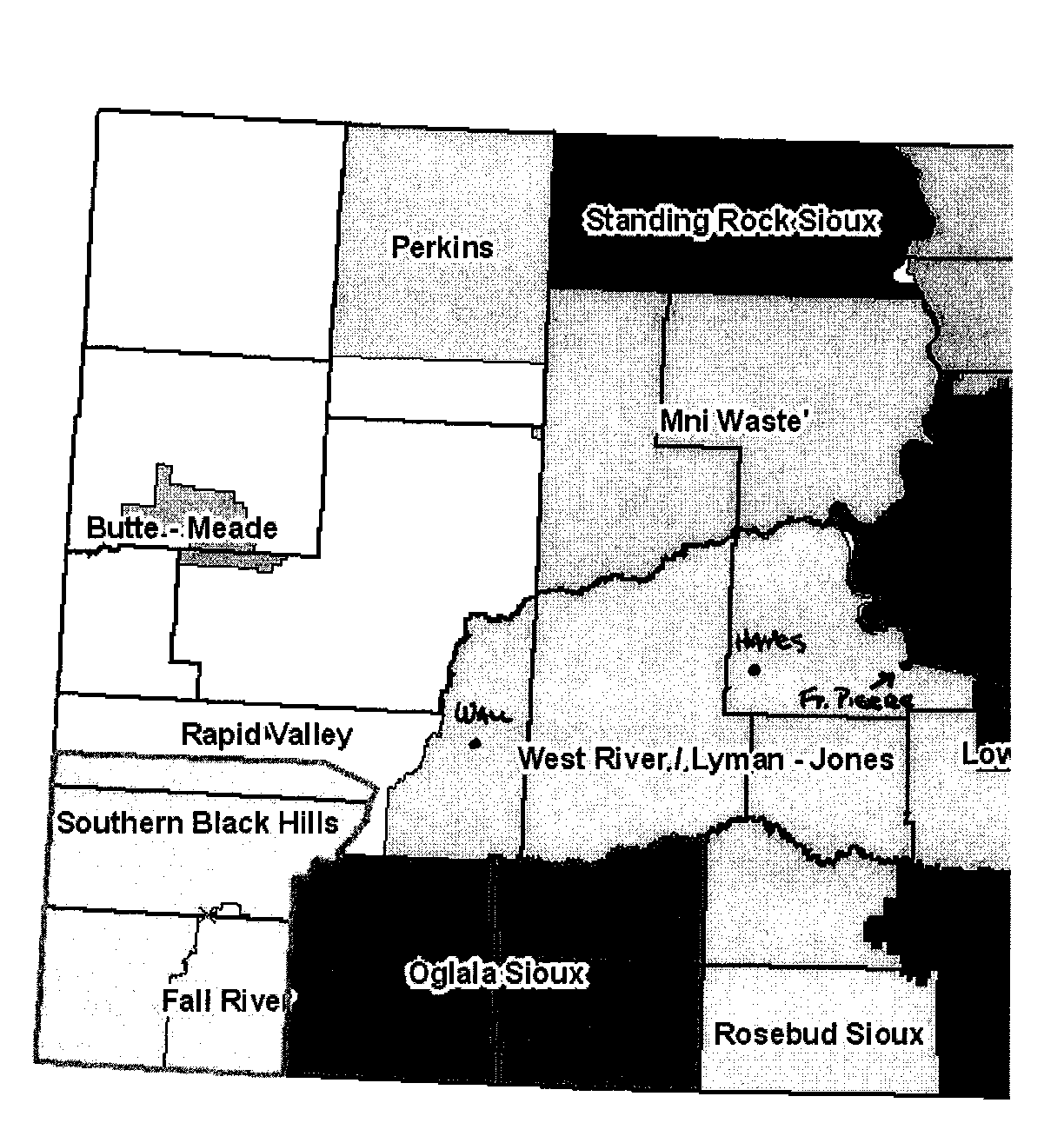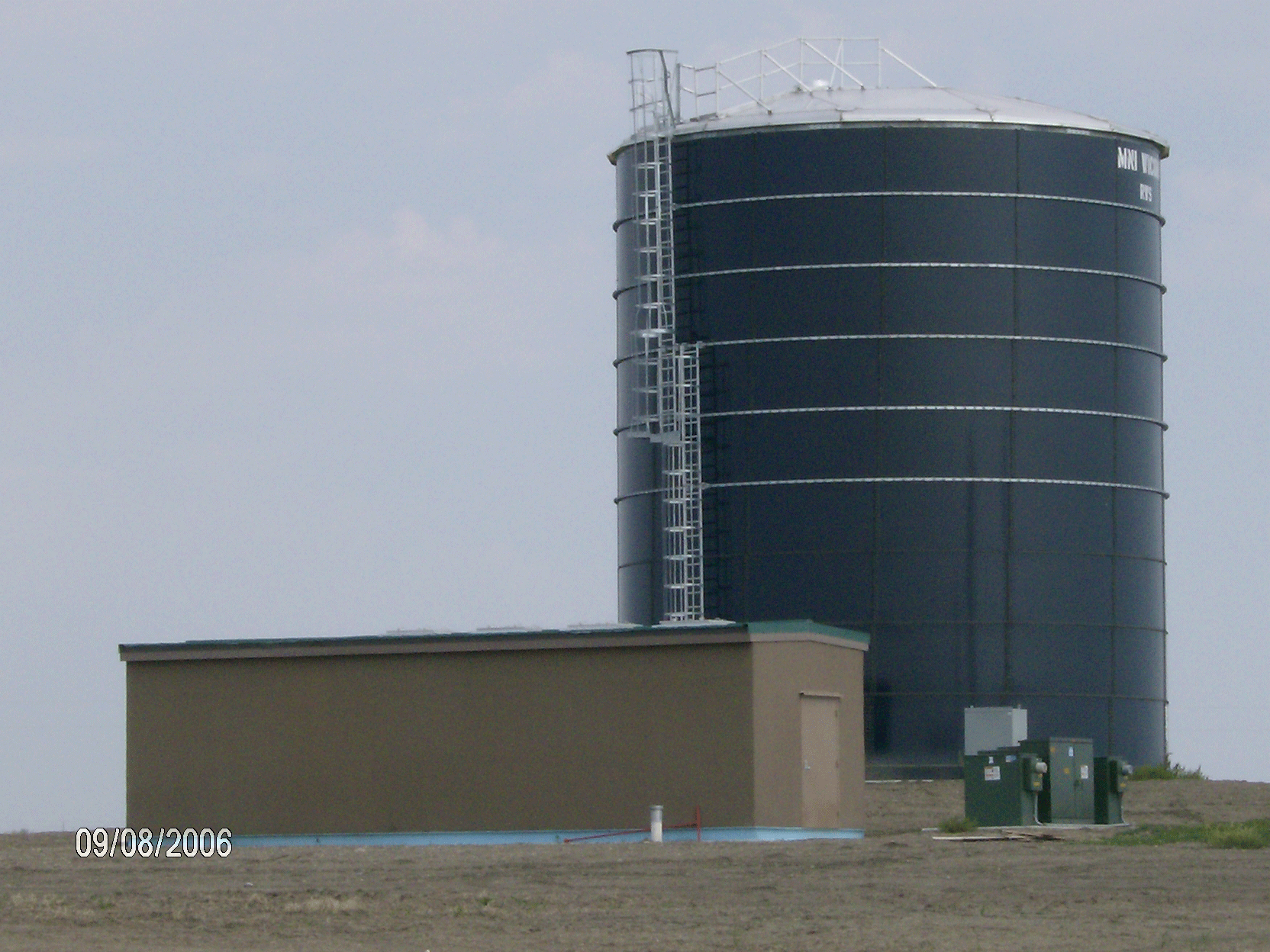When West River/Lyman Jones Rural Water Systems decided it was time to expand their service area, the task at hand was of enormous scale.
WR/LJ rural water, based in the small South Dakota community of Murdo, is physically one of the largest rural water systems in South Dakota. The North Core Pipeline Project, Phase 1 (NCP1) started in November of 2004 with the assistance of the Department of Environmental and Natural Resources and the Bureau of Reclamation to secure funding for the project.
Once the money was appropriated, WR/LJ contacted their design consultant, DeWild Grant Reckert and Associates Company (Rock Rapids, IA). Heading up the project for DGR was project manager and design engineer John Madden, PE, accompanied by his assistant design engineer, Laura Leenderts, PE, and several engineering technicians and field surveyors. Together, the DGR team set out to handle the design task of expanding the 2500+ connections currently supplied by WRLJ RW.
Under normal circumstances, one believes rural water is solely for clean, safe domestic water – but not entirely in this case.
WRLJ has multiple connections that are used for domestic usage that also to provide safe drinking water for livestock in the drought ridden plains of South Dakota. The plains have been in a drought situation for the last six to seven years, leaving stock dams and typical watering holes either dry or at levels that make the water unsafe for livestock to consume. With this being the case, South Dakota farmers and ranchers are utilizing alternate methods to maintain the health of the heartlands livestock.
Where does the water come from?
The entire WR/LJ rural water system currently serves approximately 2500 connections, both domestic and livestock, with another 200+ in areas yet to be served. The NCP1 is the first segment consisting of approximately 38 miles of 16-in and 14-in diameter PVC pipeline that will deliver Missouri river water from the Mni Wiconi Water Treatment Plant near Ft. Pierre, SD, to the northern and western portions of the WR/LJ water system, with water reaching nearly 150 miles west to the world famous tourist attraction of Wall Drug, located in Wall, SD.


The NCP1 will immediately impact 400 connections northwest of Ft. Pierre. The project is especially important for the connections north of Hayes, where water service was intermittent during the summer months due to limitations of a temporary supply line, and connections south of Hayes that was constructed this summer and will be served through taps to the core line.
Ultimately, the NCP1 project will be turned over to the Ogalala Sioux Tribe who will maintain ownership of the pipeline, tanks, and a major portion of the booster stations.
The NCP1 was broken into three main contracts: Schedule 1 – Pipeline, Schedule 2 – Reservoirs, and Schedule 4 – Package Pump Stations. The entire project was ready for bids in August of 2005. Schedule 2 and 4 were bid in September, and Schedule 1 was delayed due to the negative effect Hurricane Katrina had on PVC prices.
Schedule 1 – Pipeline
This contract was awarded to Morris, Inc. (Ft. Pierre, SD) and consisted of supply and installation of the nearly 38 miles of pipeline.
DGR and WR/LJ are using PVC pipe instead of steel or ductile iron to eliminate problems associated with corrosion. In addition, PVC was more cost effective than steel or ductile iron pipe. Fittings are ductile iron with cathodic protection at each fitting location. The pipeline portion of the project began in March 2006 and is on schedule for an October 1, 2006 completion.
Schedule 2 – Reservoirs
This contract was awarded to Engineering America, Inc. (Oakdale, MN) and consisted of supplying and construction of three Aquastore reservoir tanks, along with setting of the booster stations, necessary site work to connect the two entities, and making provisions for connection of the Schedule 1 pipeline.
- Tank #1 is 36-ft diameter by 42-ft high with a capacity of 327,000-gal
- Tank #2 is 31-ft diameter by 38-ft high with a capacity of 209,000-gal
- Tank #3 is 50-ft diameter by 38-ft high with a capacity of 560,000-gal
DGR and WR/LJ decided “glass-lined” tanks were appropriate for the NCP1 for two main reasons. First, they are bolted steel rather than welded steel, which has a positive impact on construction. Second, the tanks have a “glass-fused-to-steel coating” that allows for year-round factory coating and reduces life-cycle costs by eliminating the need for repainting.
Schedule 4 – Package Pump Stations
This contract was awarded to Dakota Pump Inc. (Mitchell, SD) and consisted of supplying and delivering three DPI-packaged modular booster pump stations (BPS).
BPS #1 is a 40-ft long by 13-ft 6-in wide Dupont fiberglass modular building equipped with six pumps. This booster station is a joint venture between the Ogalala Sioux Tribe and WR/LJ. It consists of four 100-hp Goulds vertical turbine pumps, supplied to DPI from W. W. Goetsch Associates, Inc. (Minneapolis, MN) boosting water from tank #1 through the NCP1, and two 20-hpGrundfos vertical multi-stage pumps supplying water to a portion of the WR/LJ service area.
BPS #2 is a 31-ft long by 13-ft 6-in wide building equipped with five 50-hp Goulds vertical turbine pumps boosting water from tank #2 and supplying to tank #3 through the NCP1.
BPS #3 is a 45-ft long by 13-ft 6-in wide building equipped with seven pumps. This is also a joint venture between the Ogalala Sioux Tribe and WR/LJ. It consists of four 40-hp Goulds vertical turbine pumps boosting water through the NCP1 and three Goulds vertical turbine pumps supplying water to another portion of the WR/LJ service area.
All 18 pumps within the three BPSs are driven via Saftronics variable frequency drives which receive control signals from the local telemetry system. Booster stations #1 and #3 are unique since, essentially, maintenance personnel from separate entities are handling two separate booster pump stations within one building.
DGR and WR/LJ decided to use packaged booster stations on this project for their typical cost effectiveness and reducing construction time frames. The booster stations are delivered to the job-site ready for incoming power, pipeline inlet and outlet connections, which allows for construction of the package booster to begin before the site work is complete.
Completions of all portions of this project are currently on schedule to be finished on October 1. This large-scale project has gone from funding to operation in less than two years.
When it boils right down to it, supplying “Quality on Tap” to remote locations such as the western plains of South Dakota stimulates a project that requires the professionalism of all parties . . . from government funding to an owner willing to take on responsibility . . . and from design engineer to contractors and manufacturers supplying quality products in a timely and cost effective manner.


